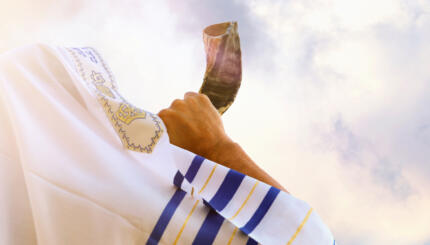My 10-year-old son, Micah, came home from school earlier this week humming a familiar tune. “The Place Where I Belong” by the Jewish band Journeys is a song about the destruction of the Jewish community in Kiev from the perspective of a Torah scroll. I recognized the tune right away because I also learned it as a child. It is a soulful song. It is a beautiful song. It is a bittersweet song about what we as a people hold dear and try to preserve, yet at the same time we understand that the communities of pre-war Eastern Europe of which it speaks can never be reclaimed.
It was clear that the song affected my son. I know that his school gives careful attention to teaching students what they are emotionally ready to handle, and that through this song, he was being exposed to more knowledge about the Holocaust than he had been in previous grades.
I was gratified to see that he connected to the Holocaust and to the history of the Jewish people in a new and deeper way. This connection is exactly the reason my husband and I send him to a Jewish day school.
His music teacher astutely observed that the song hit a chord with Micah and (going above and beyond as she often does) thoughtfully emailed me at night with a link to share with him – a video depicting the tale the song tells. (View it here.) She told me that she chose not to show it in school, but Micah expressed a higher level of interest, approaching her after class. She gave me the link, leaving it to me to decide whether to show him the video or not.
I watched the video. While I appreciated the idea of animating the story through video, something about it bothered me. I decided to share it with Micah. “Did you notice anything unusual about the clip?” I asked him. He smiled at me, knowing that my very posing the question was a hint at what the answer might be.
“Yes,” he responded. “There were no women in it.”
I debated about whether it is appropriate to call attention to gender issues in connection with the Holocaust. I decided that Yom Hashoah, Holocaust Remembrance Day, was not the right day to raise this issue for two reasons. First, Yom Hashoah should be a day solely devoted to remembering the victims of what is arguably the worst tragedy to befall the Jewish people in its entire history. That is all. Second, I do not believe that this video is representative of Holocaust education.
READ: Women in Holocaust Literature: Central Themes
Instead, it is but one instance of many that point to the absence of women from the tools we use to tell our collective narrative. Only this example was more disturbing than, say, censoring women out of the news or overlooking their presence in synagogue. Because we are here now – we have the ability to raise our voices and say “We are here – in the news and in our synagogues and in our communal leadership positions.” But the women who perished in the Holocaust – the proud and loving and graceful and smart and kind and witty women who were killed cannot raise their voices to say that they were a critical part of their Jewish communities and they deserve to be represented and remembered.
And so I raise a point about gender because when we teach our children – whether we are teaching about the Holocaust or anything else – we are forming what is normative, and we are shaping their opinions and their perspectives.
To be clear, I don’t think that the makers of this video had any malicious intent. Just like I don’t think it is malicious when an Orthodox man looking to make a minyan asks, “How many people do we have?” instead of “How many men are here?” (Only men are counted in an Orthodox minyan, or prayer quorum.) Nor is it malicious when I read a widely-used children’s parsha (Torah portion) book with my kids and need to adjust “The Torah teaches us to honor an older man” to “an older person.” It is not malicious, but it implies that men and community are one in the same, and that if men are represented, then the community is represented. This mentality marginalizes the role of the Jewish woman and that can have dangerous consequences, even though they are unintentional.
I encourage our Jewish educators, policy makers, rabbis and leaders to utilize language and images that tell of our whole Jewish community – so that women can truly feel that this community is the place where they belong.
Torah
Pronunced: TORE-uh, Origin: Hebrew, the Five Books of Moses.



